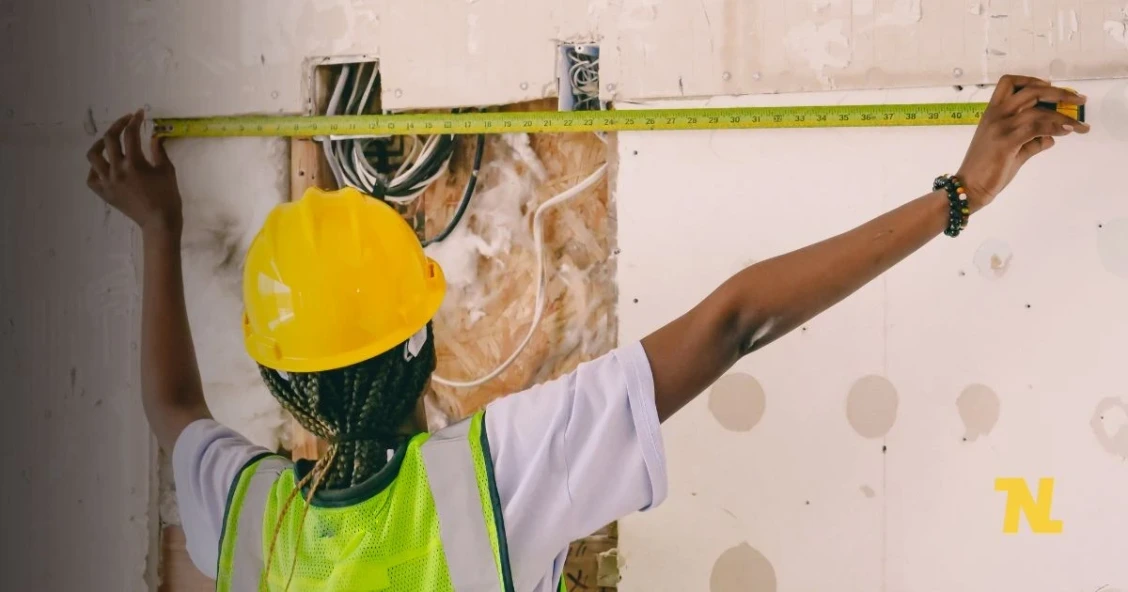
Whether it’s some DIY project or a professional one, tape measures have been essential in every industry. Digital tape measures replace the traditional tape measures as the technology advances. There’s a debate around this topic about which one is better.
In this article, we will discover the various aspects of digital and traditional tape measures and compare them. This will also help you choose the one according to your needs.
Tape Measure:

This is also known as measuring tape and has become an essential tool in every field but and mostly used in construction and carpentry. This device allows users to measure heights, widths and lengths accurately no matter if it is a digital or traditional one. If you want the right one according to your need it is important to understand the difference between digital and traditional tape measure.
Difference between Digital and Traditional Tape Measure
Digital Tape Measure

These tape measures use sensors and displays to give you highly accurate measurements and combine modern technology with traditional measuring techniques. They also offer you many other features such as unit conversion, laser distance measurement and memory storage.
Traditional Tape Measure

Traditional tape measure has a cloth strip or a retractable metal marked with inches or centimetres. These rely on the user’s ability to read the measurements from the tape because these are purely mechanical. The methods of both types are different but both offer the same basic functions.
Comparison of Digital and Traditional Tape Measure

Here’s a comparison of the different features that both types of tape measure offer their users. The features we are going to discuss help you choose the one for your projects and also help you know the pros and cons of both.
Preciseness and Accuracy
When we compare tape measures the accuracy is one of the most important factors. The digital tape measure reduces human error by providing you with direct digital readings which ensures a higher degree of precision. For projects, like cabinetry or interior design this can be very useful.
On the other hand, especially in skilled hands traditional tape measure can also provide accurate results. Traditional tape measures can provide satisfactory results for many tasks like basic carpentry. They can match the required precision for most of the tasks with careful reading.
User friendly
When it comes to user friendly the digital tape measures are designed for ease of use. They provide you with features like buttons for switching between measurement units, automatic measurement reading and backlit displays for better visibility. Other than this, some of these have laser distance finders, that help you measure the object without direct contact.
While traditional tape measures require more manual input and are simple. To measure you have to extend the tape hold it in place and read the measurement. This can sometimes be an inaccurate measurement, especially when the tape is not fully straight or bends.
Quality and Durability

This is another important factor to consider. Traditional tape measures are known for their good quality. They are commonly made from plastic and metal and can handle regular damage. They can also withstand the rough conditions of the construction site making them the best choice for construction projects.
Digital tape measures provide durability but their electrical components make them more vulnerable to damage from extreme weather conditions or drops. They require more care in handling as the issues of display malfunction or sensor failure occur over time if not handled properly.
Convenience and Portability
Traditional tape measures are lightweight and compact, but both digital and traditional tape measures are portable. The traditional tape measures provide convenience as they don’t require batteries, especially for workers who have to work in remote areas or outdoors where easy access to power sources is not available.
Digital tape measures, along with portability, usually come with added bulk due to their batteries and screens. During long days on the job site, battery life can be a limiting factor as users have to recharge the device regularly or carry spare batteries.
Flexibility and Measuring Range.

Traditional tape measures length ranging from 16 feet to 50 feet while some of them provide longer measuring tapes. They can be used in tight spaces and are flexible, but it can be difficult to extend them over long distances.
Digital tape measures usually have additional laser distance measuring tools, making their range much longer than traditional tape measures. Some digital tape measures can measure a distance of up to 200 feet or more, which makes them ideal for projects where other tape measures might fail to meet the requirements.
Cost Difference

For most buyers, price is a key aspect. The prices of the traditional tape measures range from $5 to $30 which is generally much more affordable, the price depends on the brand and size. They are budget-friendly and durable enough to work for many years with least care.
In contrast, digital tape measures tend to be more expensive. Depending on the features and brand, their prices typically range from $30 to $150. As they provide advanced functionalities, the high may not be acceptable for users who require basic measurements.
Over Time Accuracy
Both of the tape measures can keep over time accuracy, but damage or bending of the tape of traditional tape measure makes them more susceptible to damage, which also causes inaccurate measurement.
On the other hand, digital tape measures have less chance of mechanical damage, expend on the electronic components that can malfunction or degrade over time. To maintain their accuracy regular adjustment may be necessary.
Error Reduction and Human Error

The ability to reduce human error is one of the biggest advantages of digital tape measures. There’s less chance of misreading the numbers because of the automatic measurements and digital readouts. Some of them also have features for error-checking, to help you indicate when the measurement is complete, such as visual alerts or beeps.
While traditional tape measures are simple but mainly depend on the user’s attentiveness and skills. If the tape is bent and not properly aligned errors can occur.
Pros and Cons of Digital Tape Measures
Pros:
- High accuracy with digital readouts
- Additional features like laser measuring, memory storage
- Unit conversions convenience
- Best for large-scale projects
Cons:
- Require batteries
- Not budget-friendly
- Less durable in harsh environments
Pros and Cons of Traditional Tape Measures
Pros:
- Reliable and Simple
- Affordable and durable
- Best for most general tasks
- No batteries required
Cons:
- Human error chance
- Compared to digital models provide a limited range
- For longer measurements can be inconvenient
Conclusion
It depends on the user’s need to choose between a digital tape measure or a traditional tape measure. I your priorities are advanced features and accuracy, then digital tape measure is the best especially if you are working on a large-scale project. But if you are working on DIY projects or everyday tasks then a traditional tape measure is a more cost-effective and reliable choice.

